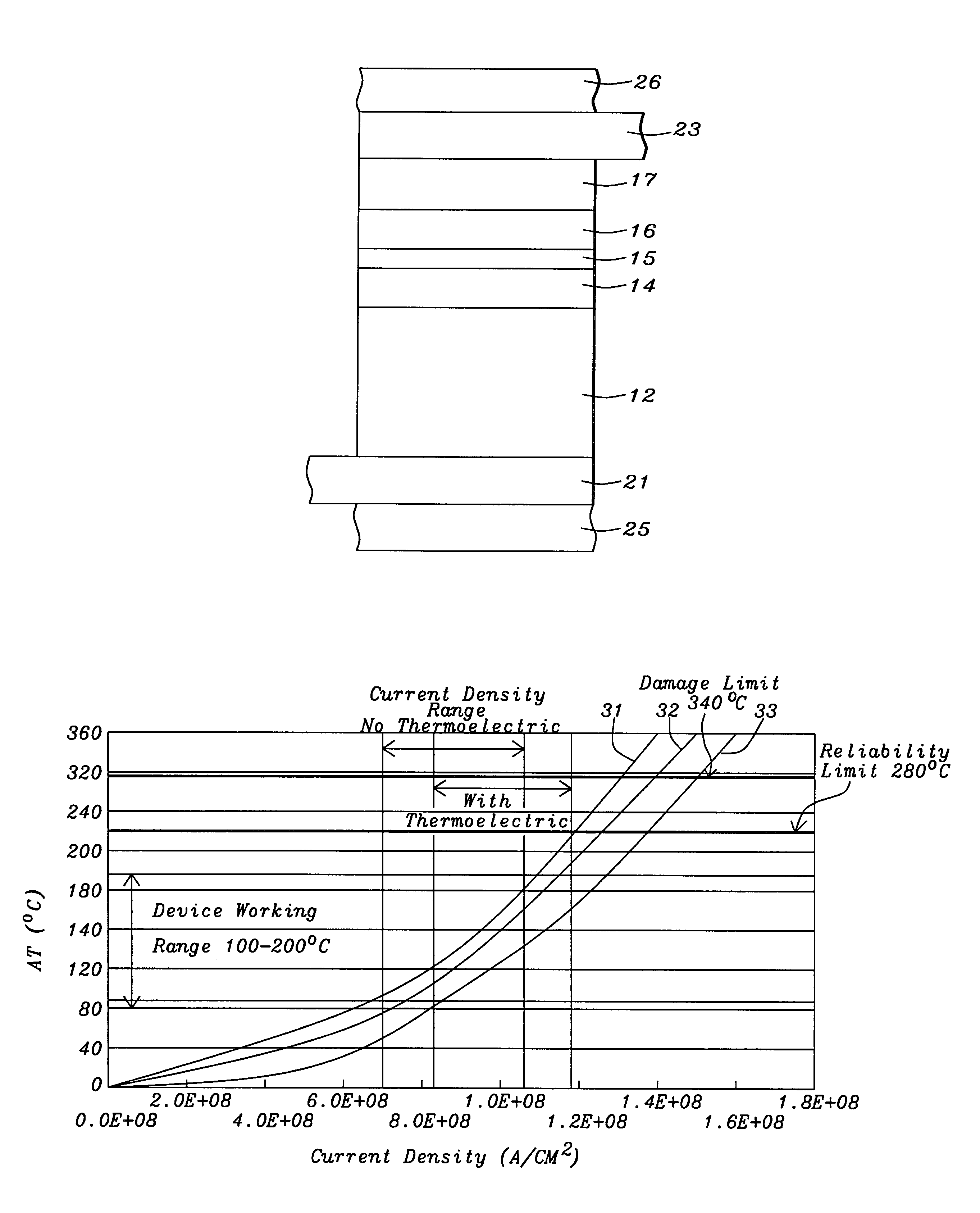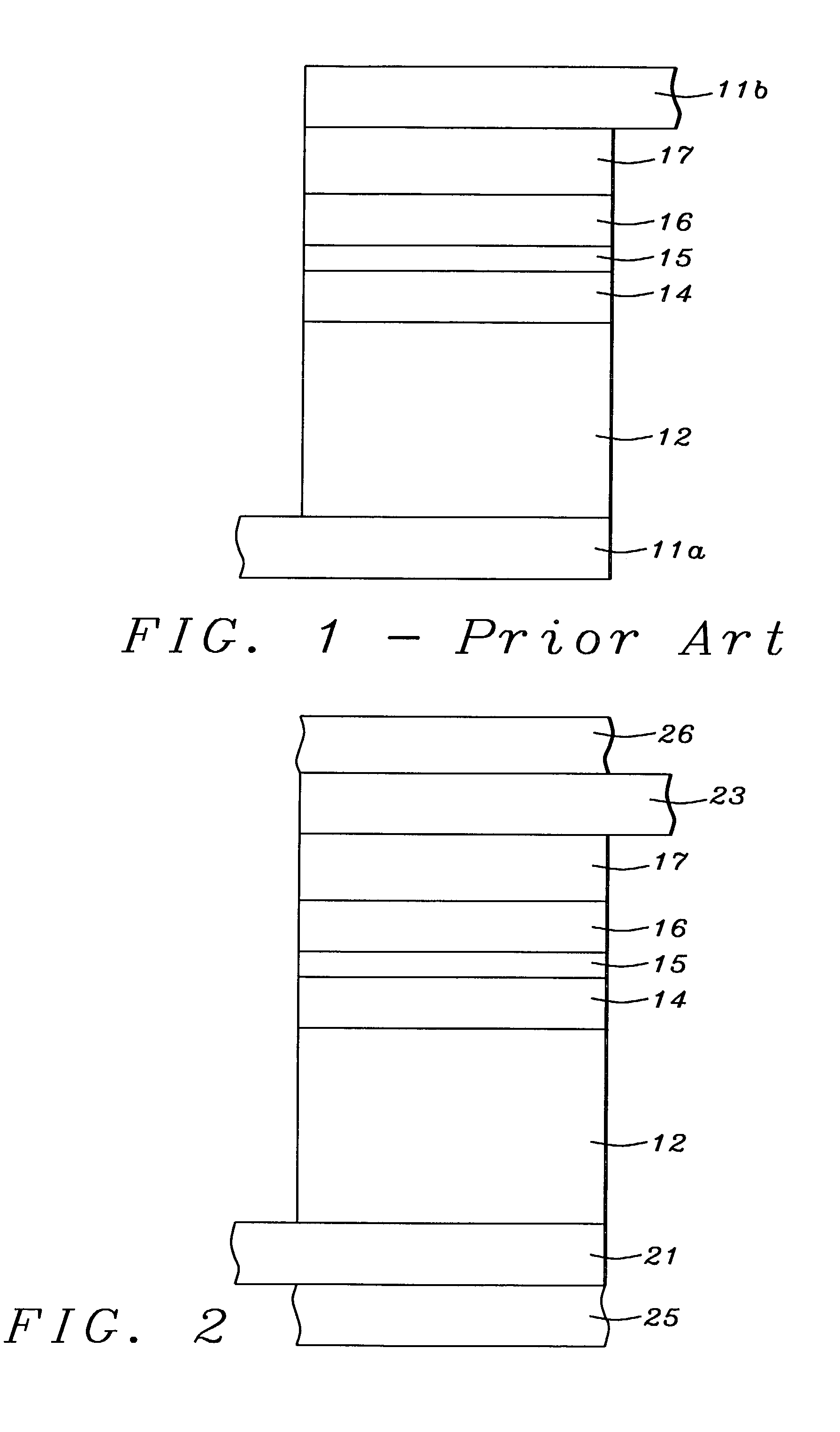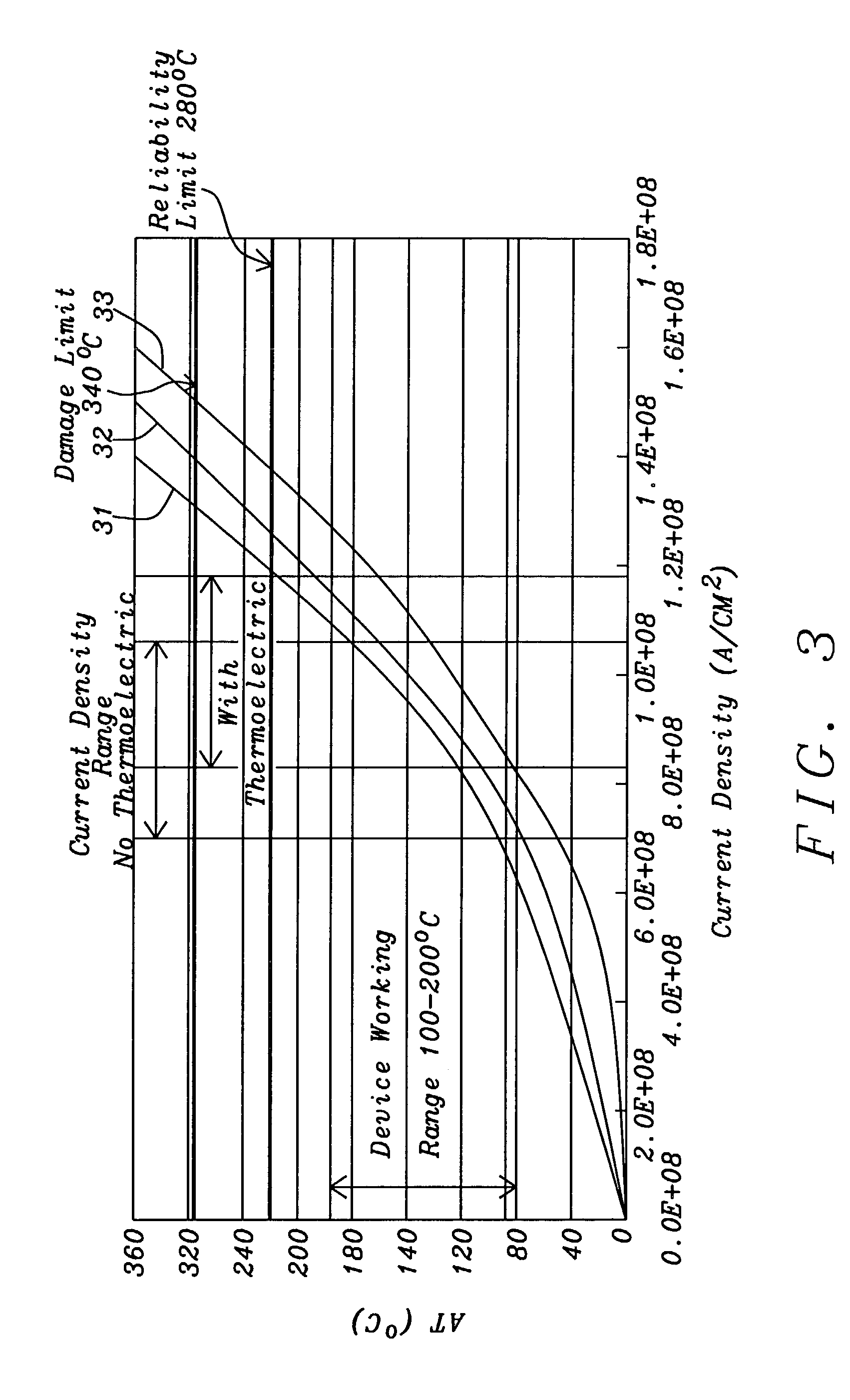Device with thermoelectric cooling
a technology of thermoelectric cooling and devices, applied in the field of memory read heads, can solve the problems of limiting the increase of application current and inacceptable increases in and achieve the effects of increasing the output voltage, and reducing the operating temperature of devices
- Summary
- Abstract
- Description
- Claims
- Application Information
AI Technical Summary
Benefits of technology
Problems solved by technology
Method used
Image
Examples
Embodiment Construction
[0022]Thermoelectrics are based on the Peltier Effect, discovered in 1834, in which DC current, applied across two dissimilar materials, causes a temperature differential. The Peltier Effect is one of three thermoelectric effects, the other two being the Seebeck Effect and the Thomson Effect. The latter effect acts on a single conductor, the Peltier Effect is typically a junction phenomenon, while the Seebeck effect is responsible for the Peltier and Thomson effects in the absence of an applied voltage.
[0023]Thermoelectric modules are widely available and usually comprise two thin ceramic wafers with a series of P and N doped bismuth-telluride semiconductor material sandwiched between them. The N type material has an excess of electrons, while the P type material has a deficit of electrons. As the electrons move from the P type material to the N type material, the electrons must enter a higher energy state. The energy to achieve this is extracted from the surrounding lattice so the ...
PUM
| Property | Measurement | Unit |
|---|---|---|
| thickness | aaaaa | aaaaa |
| thickness | aaaaa | aaaaa |
| heat dissipation | aaaaa | aaaaa |
Abstract
Description
Claims
Application Information
 Login to View More
Login to View More - R&D
- Intellectual Property
- Life Sciences
- Materials
- Tech Scout
- Unparalleled Data Quality
- Higher Quality Content
- 60% Fewer Hallucinations
Browse by: Latest US Patents, China's latest patents, Technical Efficacy Thesaurus, Application Domain, Technology Topic, Popular Technical Reports.
© 2025 PatSnap. All rights reserved.Legal|Privacy policy|Modern Slavery Act Transparency Statement|Sitemap|About US| Contact US: help@patsnap.com



